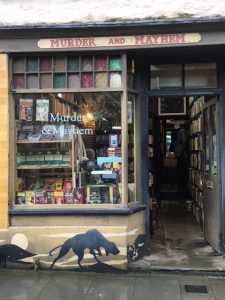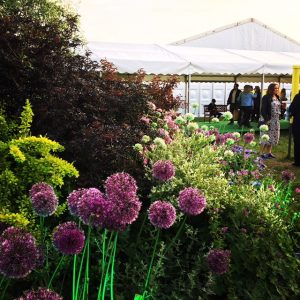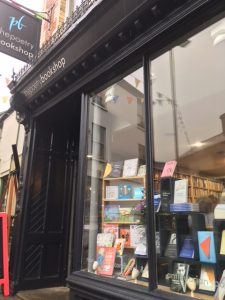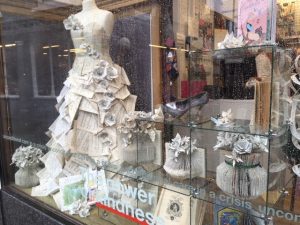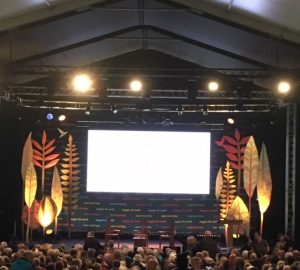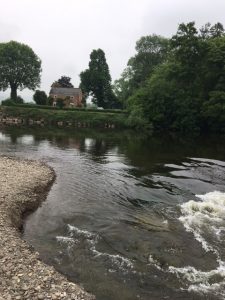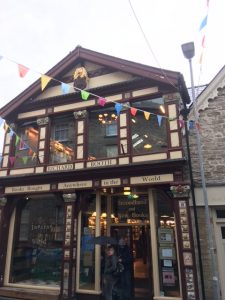So…2018. How was it for you? My year got a little ploddy. A little spend-all-the-free-time-dragging-through-housework-while-sleep-deprived-from-illness-and-injury-ish. A little every-outing-or-escapade-requires-double-chores-on-surrounding-days-and-heaps-of-TLC-to-convince-family-members-to-go-along-with-it-y.
That demolished my writing and reading routines for the last couple of months, and honestly, I kind of allowed it to. But while I haven’t got a finished draft of my current novel, or a publisher for my other one, and I was mostly long listed in 2018 with just a couple of shortlistings—those hard-plotted outings and escapades I cajoled my family into? They were awesome.
When I look back, it’s not the stresses my mind turns to; it’s the adventures shared. It was tricky to narrow down the top explores of 2018, but here they are, the ones that most charged up the imagination and, well, made life grand.
Hay-on-Wye: It’s got tonnes of books, and a river. Pretty much my two favourite things! Oh, and plenty of nice places to eat. Or just buy a Welsh cake. This year was my first at the late May literary festival there, and I took in such a fantastic range of lectures and interviews. I also enjoyed wandering the streets and soaking in the literary vibe, chasing waterfalls, and watching the sun set over the river.
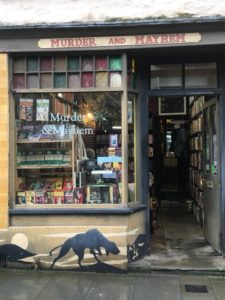
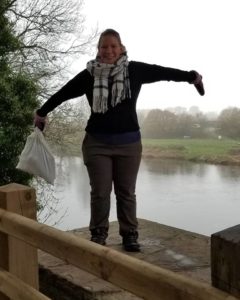

Portishead/ Window Wanderland: Portishead is one of our nearer coastal towns, but we hadn’t explored it yet. Turns out it has a lighthouse, and a lido! Throw in some grand beach houses, a beach crissed and crossed with driftwood, and a brand new lifeboat station, all making this an exciting discovery.
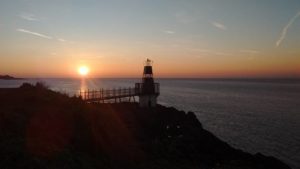

It was the Window Wanderland event that brought us there in February. I’ve written previously about Window Wanderland, when neighbourhoods decorate their windows for all to come and see. In addition to the Portishead one, we also returned to the Bishopston area of Bristol to take in their window displays, because they truly are stellar.
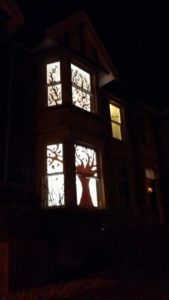
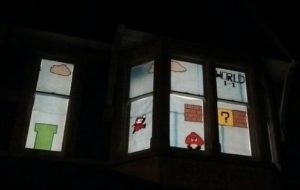
Bristol: This has made my top seven before. But it holds such a wealth of routes and sights, I had to include it again. Plus, I’ve now had a piece performed there so I can feel I belong (maybe one day I can say the same about Hay). Just some of the ways Bristol reminds us life is good: street art to marvel at on every corner, diverse museum exhibits from Wildlife Photographer of the Year to African fabrics to Japanese woodblock prints, milkshakes at Rocatillos and pie or pizza at The Stable and roasted white hot chocolate at Mrs. Potts’ Chocolate Shop, and over 800 games to choose from at the board game cafe Chance & Counters on the lovely Christmas Steps.
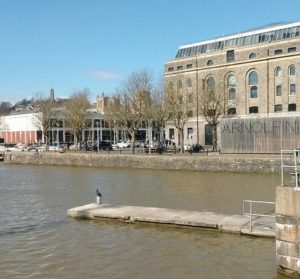
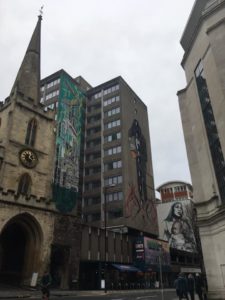
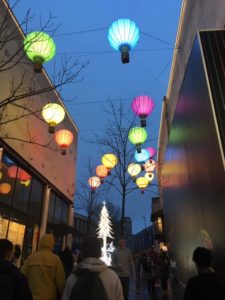
Canals, and More Canals: I know, this is a repeat, too. But my weekly hike along the Stroudwater canal continues to be a highlight, the resident waterfowl and the changing angles of sunlight affording new views in the same places every week. Plus we explored further on the Gloucester and Sharpness canal this year, climbing around the beached hulks at Purton’s ship graveyard and the marinas at Saul Junction and Sharpness. Finally, there’s the last remaining stretches of towpath on the Thames and Severn, from Stroud to Chalford, the beautiful little town carved into a hill, and then from Chalford to Sapperton, the longest canal tunnel.
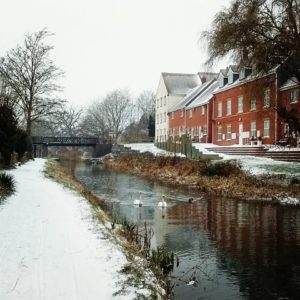

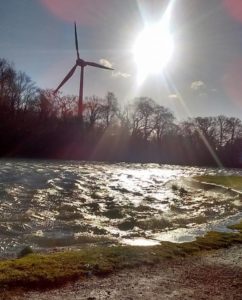
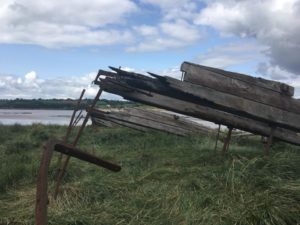
Mount Osceola: Following 2017’s excursions, I vowed to climb a higher mountain in 2018. And I did, conquering my first 4,000+ footer, in the White Mountains of my home state, New Hampshire. Climbing Mount Osceola was a bit like 2018: hard work scrambling over substantial scattered stones and patches of steep-ish rock face but in the end we had some incredible memories. And felt a tad awesome.
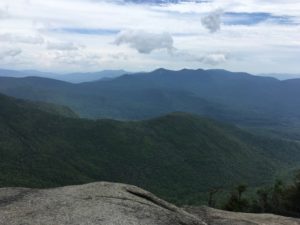
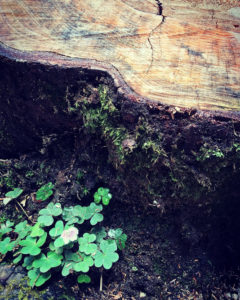
Minneapolis: One might not think of this Minnesota city in a top list of US destinations. However, we ended up there while taking our son to a gaming event, and loved it. Starting with the Walker Art Gallery’s wondrous sculpture garden, next crossing through Loring Park and Greenway seeing all the fountains and plant boxes and tiny free libraries and black squirrels (still can’t quite get over those…), we then traversed the city using the Skyway. The Skyway is a network of elevated passages between and through buildings in the city centre, allowing people to get about traffic-free and safe from the elements (in our case, it provided some relief from 100 Fahrenheit/ 38-degree Celsius temperatures). Using these passages, we found our way across the city to my first ever look at the great Mississippi River. Here, the river is flanked by old flour mills with an interesting history of rivalries, all chronicled in the Mill Ruins Park and Museum. I love a place that honours its ruins while progressing in an environment- and walker-friendly way!
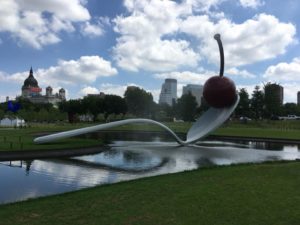
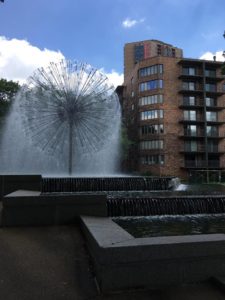
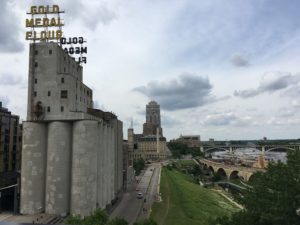
Seville: Talk about incorporating history. This southern Spanish city has Roman aqueducts still standing in the middle of busy roads. Its signature spire, Giralda Tower, was built in the 12th century as a minaret under Islamic rule. The cathedral’s incredible craftsmanship must surely have been financed through genocide and slave labour during the Age of the Explorers, when Columbus, Magellan, and their cohorts sailed triumphantly up and down the River Guadalquivir, welcomed by the Torre del Oro. The current Royal Alcazar Palace was largely built using moorish designs under a 14th-century Christian king known as Pedro the Cruel or Pedro the Just, depending who tells the story. It is still used as a royal residence 650 years later. We loved wending our way through the tight little warren of streets to these attractions, shaded by orange trees and palms and ancient gleaming facades affording us the occasional glimpse into ornate courtyards filled with greenery. Also, there was tapas. And sangria.
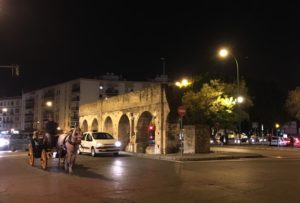
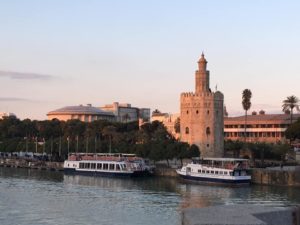

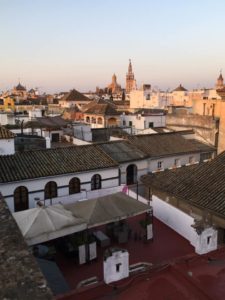
A year with this much excitement and wonder must have been pretty good. I’m looking forward to revisiting some of these locations in the coming year, discovering new destinations, and definitely putting it all to use in various tales.
Have you had experiences in any of the above places? What other spots have you explored in the last year, and where will the next one take you?
